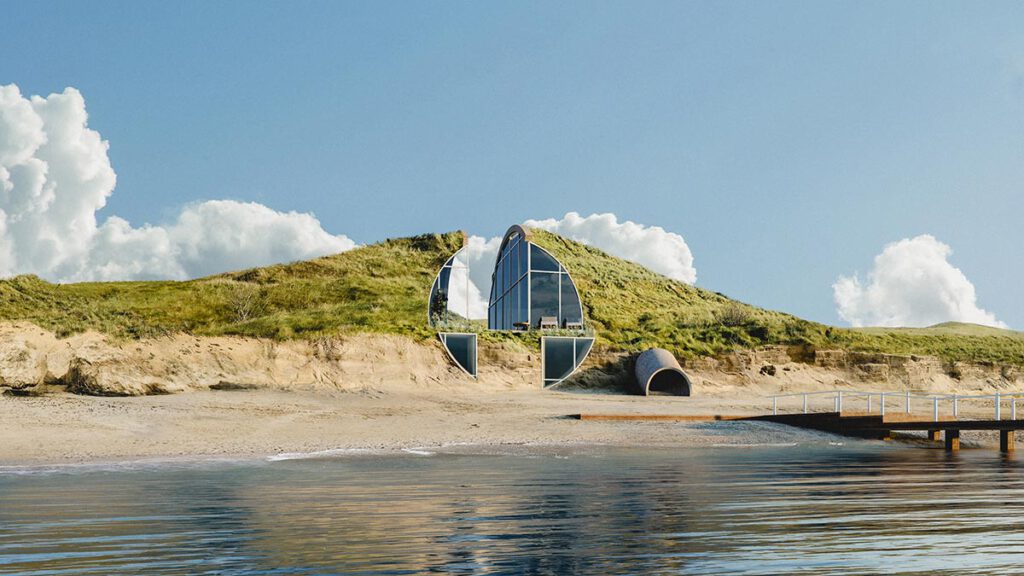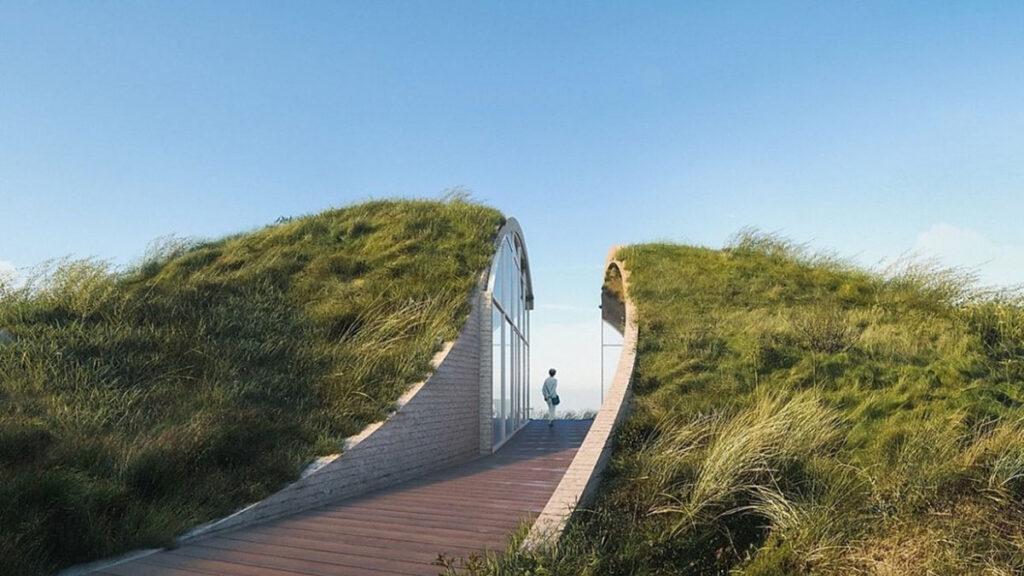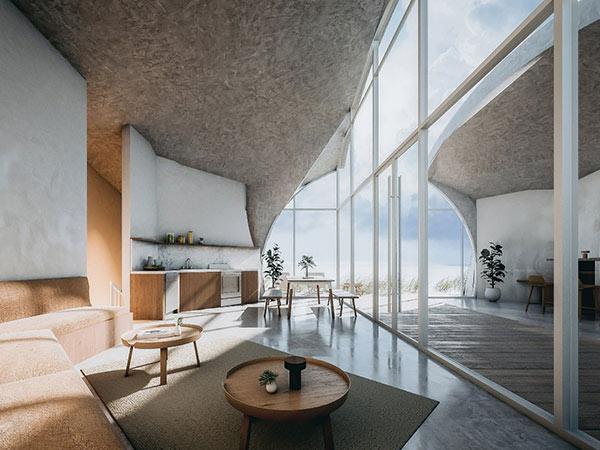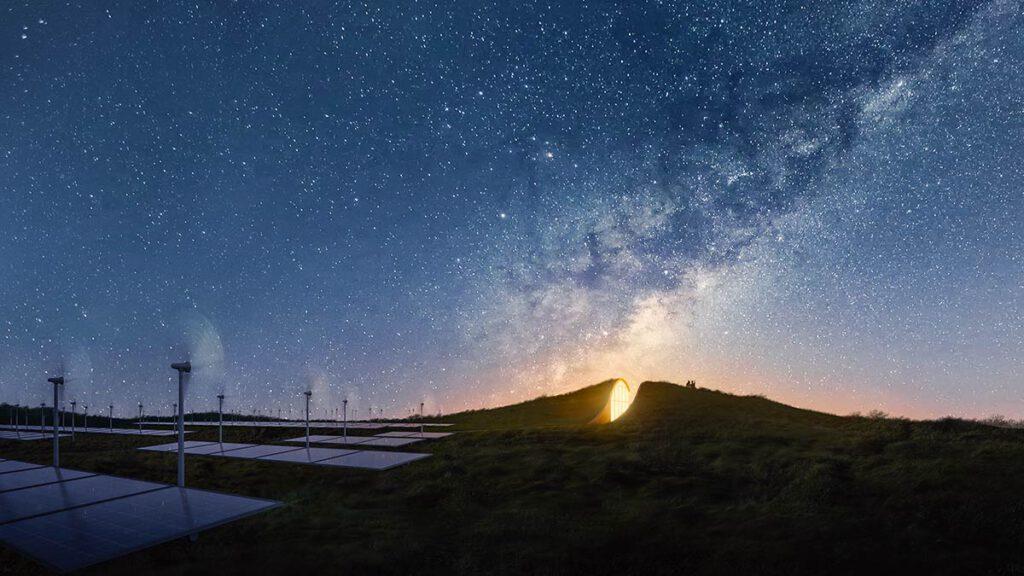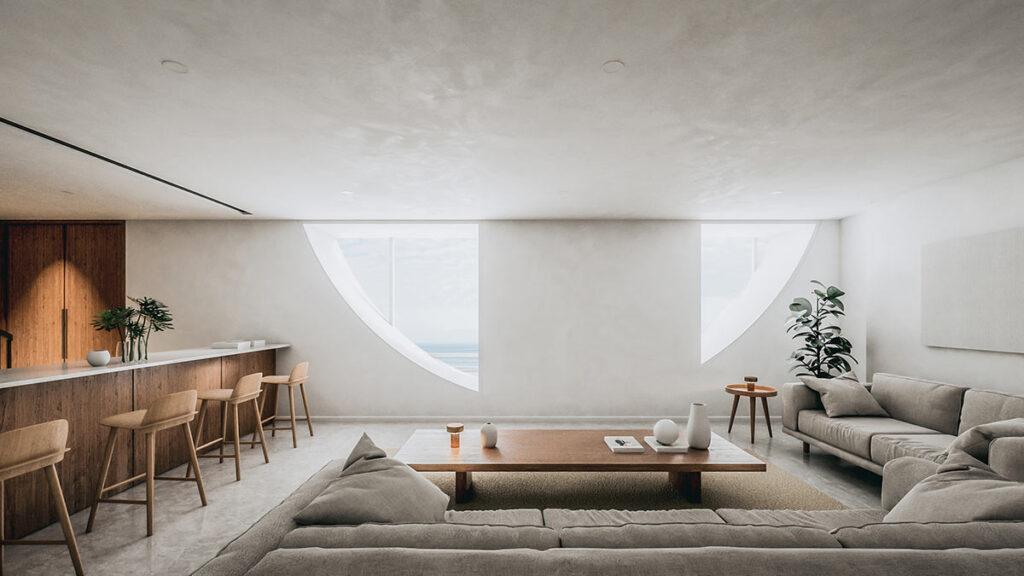House in the dunes
Architecture studio Vural has designed a holiday home that is embedded in a sand dune. The self-sufficient power concept for Dune House is a sustainability showpiece.
The sand dune has been sliced through cleanly, leaving a gaping hole. It looks like the work of a surgeon: as if two precision cuts in the landscape have been made using sharp instruments. The house nestles beneath the gentle curve of the dune, and can be entered by walking through the insection. Two floors are underground, as it were, yet the rooms are anything but gloomy. The Dune House is flooded with light and uses the sand as natural insulation.
Landscape subtraction
“Subtractive architecture” is the name given by Selim Vural to his design for a holiday home on the peninsula of Cape Cod in Massachusetts. Rather than adding another building, the founder of the Brooklyn-based architecture office Studio Vural has removed a section of the landscape and has inserted an avant-garde structure. It may only be a draft for now, but construction of the Dune House is due to begin in the autumn.
Endeavours by contemporary architects to create a minimal impact on landscapes have been carried to an extreme in Vural’s design. “The house is only recognizable from the sea as a circle with a cut, it blends seamlessly with nature,” Vural says. “The shoreline silhouette remains unchanged – the house is immersed, not imposed.”
The house is immersed in the landscape, not imposed.
Selim Vural, architect
This project is reminiscent of the spectacular “House Inside a Rock” by architect Amey Kandalgaonkar, who – at least in his renderings – made it possible to live inside a stone monolith. Artist César Manrique also springs to mind: he created entire residences inside volcanic lava bubbles on his native island of Lanzarote.
100% autonomous power
Vural is well acquainted with the region around the hook-shaped peninsula of Cape Cod. The architect spends his holidays there every year and has studied the climate, landscape and local architecture in detail. On a night-time fishing expedition, he witnessed a rare natural spectacle. A squid cast out a rainbow-coloured flash, which is a process known as bioluminescence. “If squids can power themselves, so should houses,” Vural thought, and he put his idea into practice.
The plot of land for the Dune House will not be connected in the traditional sense. It will not be on the electrical grid, but will instead meet its own power needs via an adjacent system with solar panels and miniature wind turbines. This system is equipped to produce more green energy than required, which makes it a plus-energy house.
At the Dune House, human, bird, architecture and landscape blend as an inseparable whole.
Selim Vural, architect
The high level of energy efficiency is achieved by integrating the structure into the dune. The foundations and around 80 per cent of the building shell are warmed by the geothermal temperatures of the sand. In addition to the latest research on absorptive building materials and earthwork engineering, this project also uses findings on the positive effect of the water cycle on global warming.
“The Dune House is the next generation of hyper-sustainable houses which must be aggressively pursued to turn the tables on climate change,” the architect maintains.
Vural is convinced that the technological progress that brought us climate change will take us out of the crisis as well. “At the Dune House, human, bird, architecture and landscape blend as an inseparable whole as technology makes peace with nature at last.”
Text: Gertraud Gerst
Translation: Rosemary Bridger-Lippe
Renderings: Studio Vural, Dom Wipas
